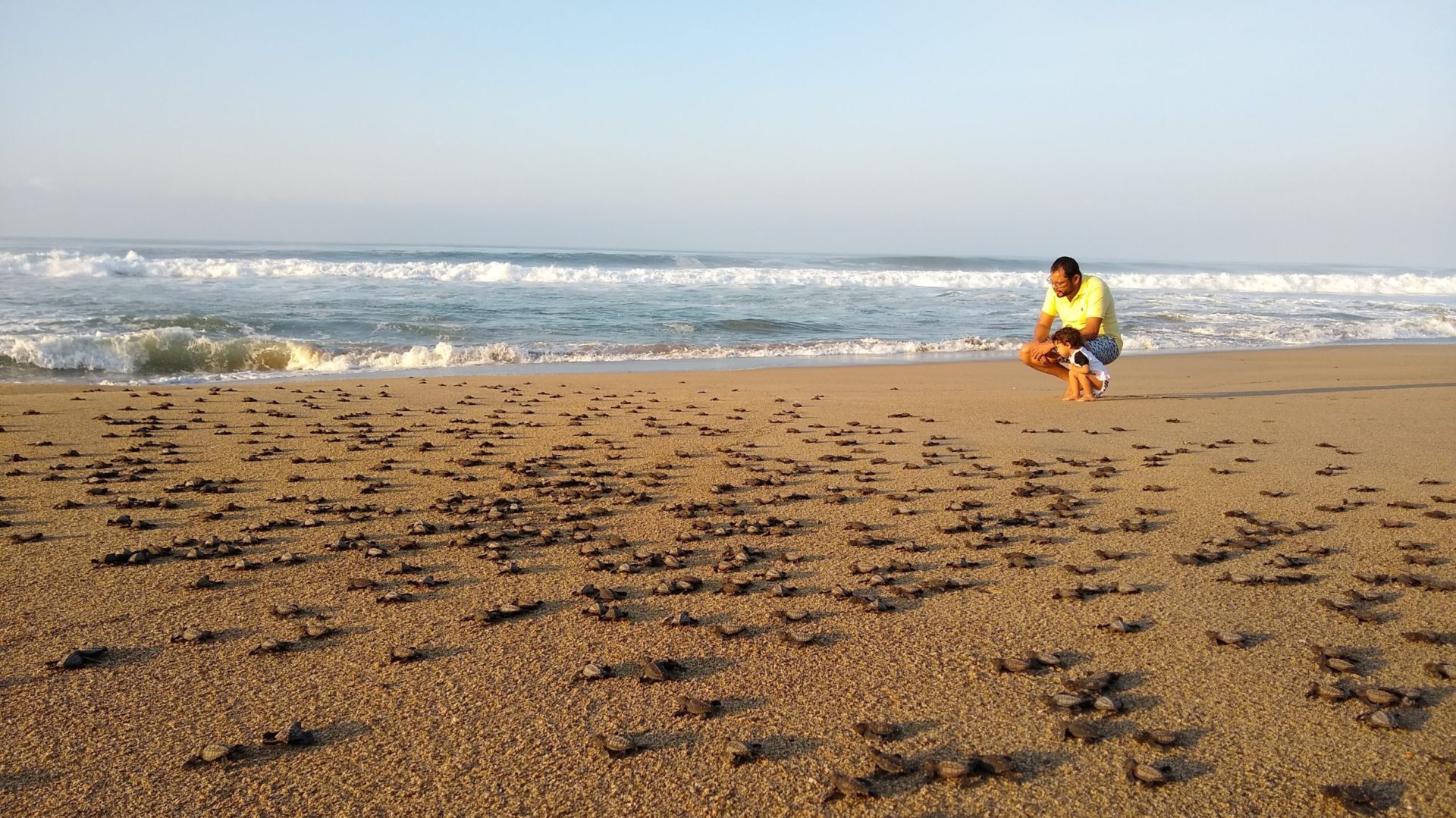Sea Turtle Conservation

We work alongside local community members to protect and preserve endangered sea turtle species for the benefit of both people and nature. From a small initiative back in 2001 to an established community conservation program, La Tortuga Viva has been operating for over 10 years and has released over 500,000 hatchlings.

LTV Goals
Our goal is to protect and repopulate endangered species nesting on our local beach, Playa Icacos.. Each year we are visited by thousands of nesting turtles. At least four of the seven sea turtle species nest on our beach:
- Olive Ridley (Lepidochelys olivacea) – Makes up 98% of our entire nest relocation program,
- Atlantic Green (Chelonia mydas),
- Leatherback (Dermochelys coriacea),
- Hawksbill (Eretmochelys imbricata) – Sightings of the Hawksbill are extremely rare
Due to human interference and ecological causes, chances are that only 1 in 1000 eggs become turtles and reach reproductive age. Alarmed by the fall of the nesting populations on our beach (largely caused by trafficking and poaching), our team of local conservationists decided to become members of La Tortuga Viva and exercise ex-situ conservation practices to restore sea turtle populations.
Our operations include:
Nightly Patrols
All year round, our team patrols up to 15km of Playa Icacos in search of sea turtle nests. Depending on climatic conditions our team will go on patrol every single night. Sea turtles typically nest at night to avoid unwanted predators. This means our team begins their shifts at 3-4am until sunrise. The number of nests found in a season can vary throughout the year, from only a handful of nests in the low season (January – May), to hundreds in the high season (June – October).

Relocating Nests

When a nest is located, our volunteers proceed to gently excavate the eggs from their chamber, taking precautions so as not to disturb the embryos inside. Collected inside a reusable bag, the eggs are carefully transported to the sanctuary where the team recreates the nest, obeying the correct nest-depth in respect to the species to ensure optimal conditions. All pertinent data is recorded and signposted above the nest, including nest number, the number of eggs, the date and the volunteers conducting the relocation.
Incubating Nests
Baby turtles are released on the beach 7-10 meters from the ocean surf to allow each hatchling to orient itself with the beach on which they were born. The hatchlings crawl forward until they are picked up by the tide and carried out into the Pacific Ocean. In the journey from beach to ocean, hatchlings are imprinting on the electromagnetic signature of the sand so that females can return in the future to lay nests of their own after long migrations.

Hatchling Release

Releasing hatchlings is a wonderful experience, although their journey ahead is a dangerous one. Predators lie in wait along the beach in the form of crabs, seabirds and small mammals. Our team protects the turtles as they make their way to the ocean, increasing the chance they survive in the wild. Once they reach the waves, the hatchlings are out of our hands and into the wide, open ocean, to begin their lives as keystone species and guardians of the ocean.
Incubation varies from 45 to 70 days depending on the species. During this time, eggs develop from embryos into hatchlings amidst the fertile soils of the beach. A modified-bucket is placed over each nest when they are close to hatching, in an effort to control temperatures & preserve hatchling energy stores. Turtle hatchlings break free from their egg shells and crawl upwards to the surface of the sand. It can take sea turtles 3 to 5 days to reach the surface ater hatching. Our team performs a final count and records findings in a logbook to be used towards our Reports. The only thing left to do is prepare the hatchlings for releae into the ocean



